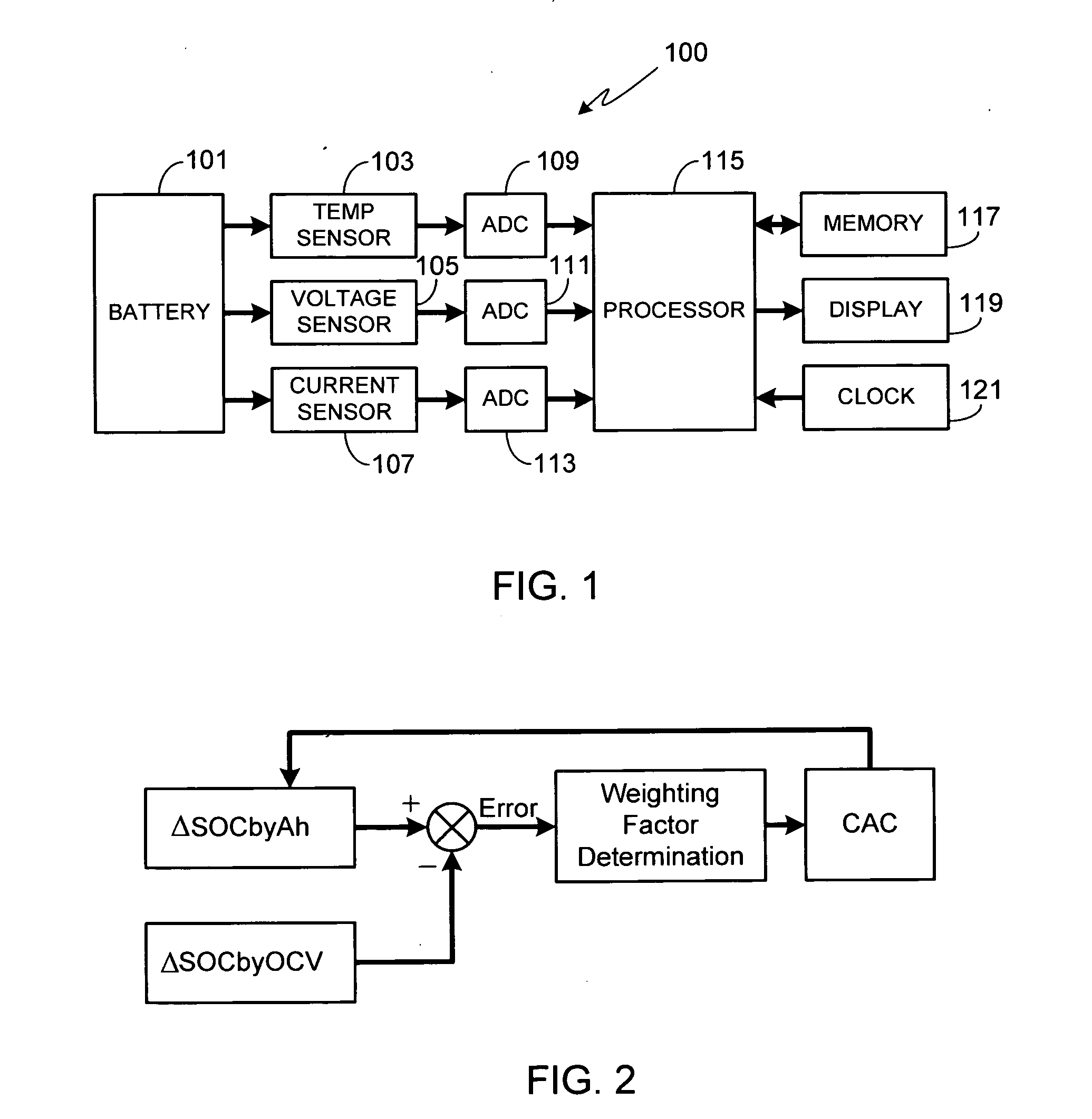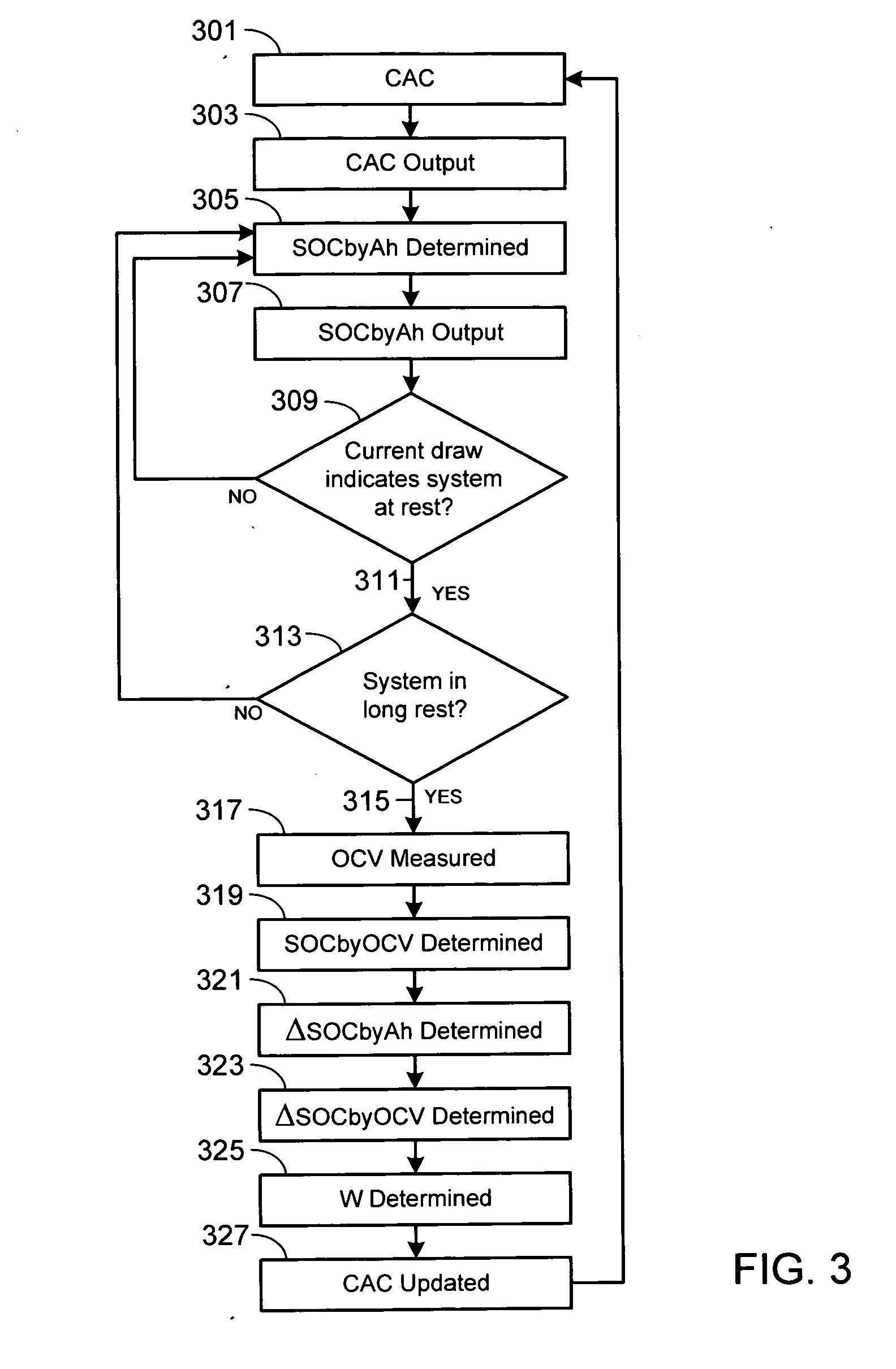Battery capacity estimating method and apparatus
a battery capacity and estimating technology, applied in the field of battery cells, can solve the problems of difficult to accurately ascertain battery capacity, serious repercussions, and technique that does not provide a very accurate assessment of battery capacity, and achieve the effect of accurately estimating battery capacity
- Summary
- Abstract
- Description
- Claims
- Application Information
AI Technical Summary
Benefits of technology
Problems solved by technology
Method used
Image
Examples
Embodiment Construction
[0011]In the following text, the terms “battery”, “cell”, and “battery cell” may be used interchangeably and may refer to any of a variety of different rechargeable cell chemistries and configurations including, but not limited to, lithium ion (e.g., lithium iron phosphate, lithium cobalt oxide, other lithium metal oxides, etc.), lithium ion polymer, nickel metal hydride, nickel cadmium, nickel hydrogen, nickel zinc, silver zinc, or other battery type / configuration. Additionally, the accompanying figures are only meant to illustrate, not limit, the scope of the invention.
[0012]FIG. 1 is a block diagram of the primary subsystems and components involved in a preferred embodiment of the invention for use in an electric vehicle (EV), hybrid electric vehicle (HEV), plug-in hybrid electric vehicle (PHEV), laptop computer, cellular phone, or other application utilizing a battery power source. It will be appreciated that other system configurations can be utilized while still retaining the ...
PUM
 Login to View More
Login to View More Abstract
Description
Claims
Application Information
 Login to View More
Login to View More - R&D
- Intellectual Property
- Life Sciences
- Materials
- Tech Scout
- Unparalleled Data Quality
- Higher Quality Content
- 60% Fewer Hallucinations
Browse by: Latest US Patents, China's latest patents, Technical Efficacy Thesaurus, Application Domain, Technology Topic, Popular Technical Reports.
© 2025 PatSnap. All rights reserved.Legal|Privacy policy|Modern Slavery Act Transparency Statement|Sitemap|About US| Contact US: help@patsnap.com



